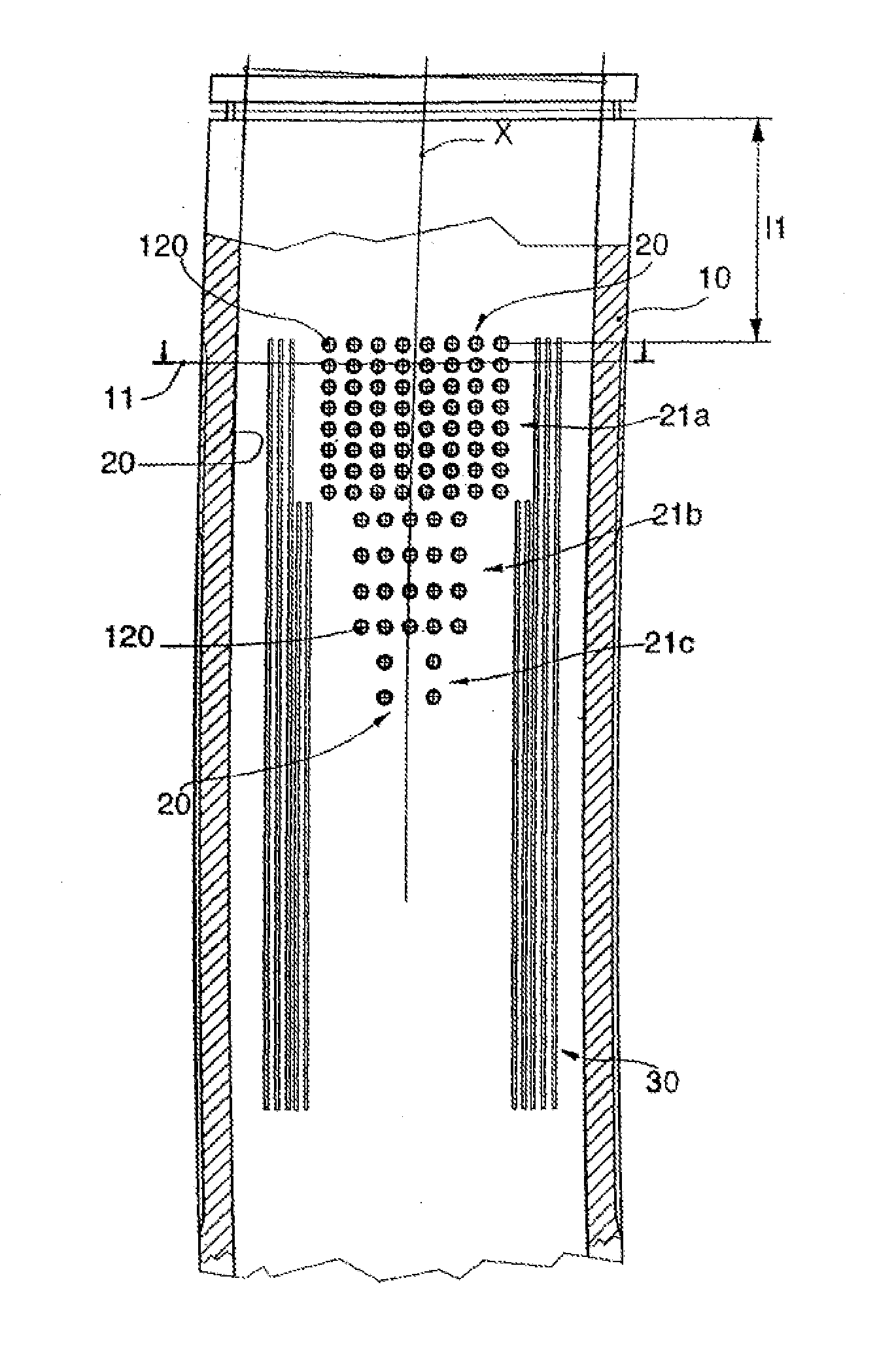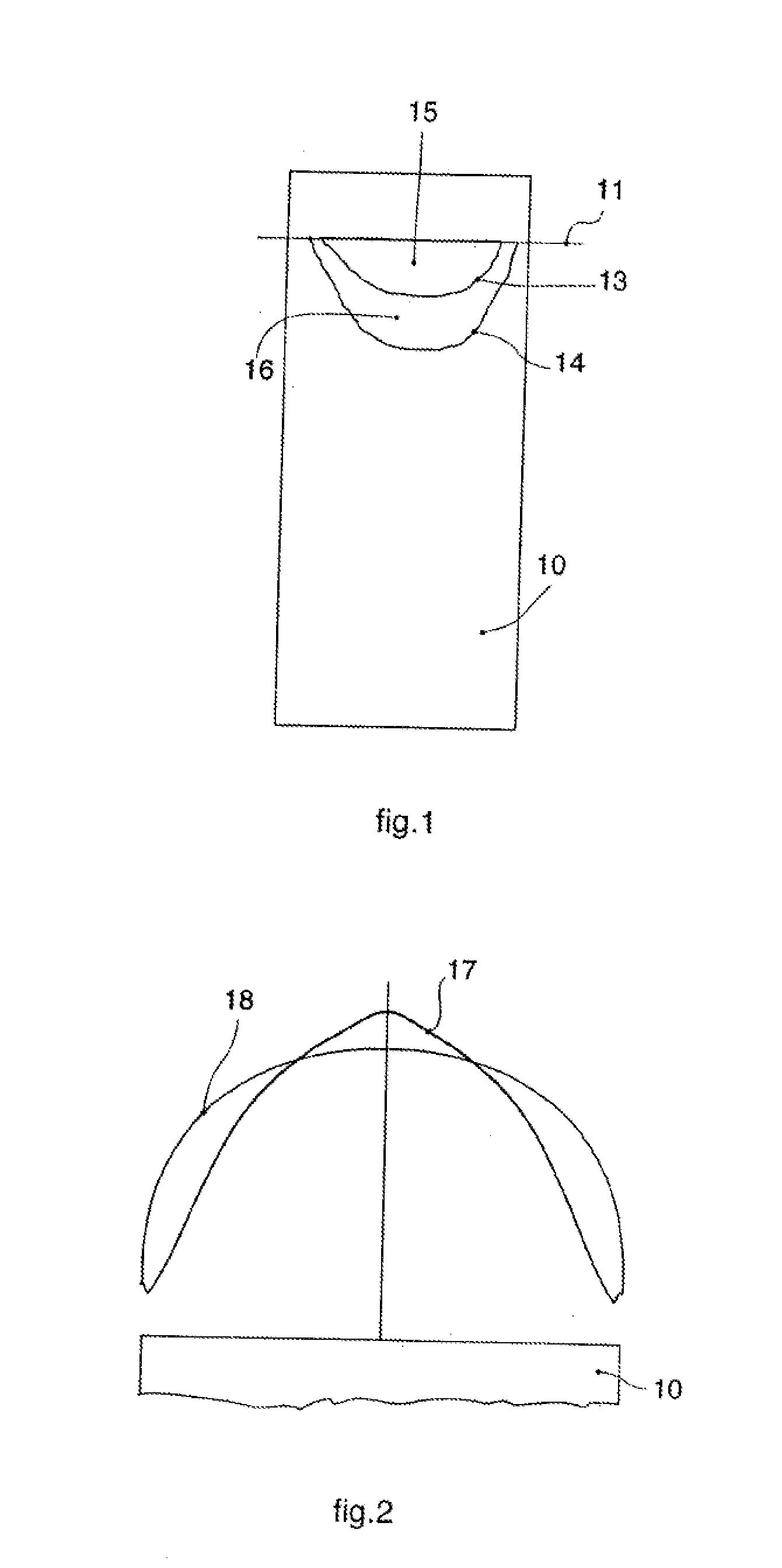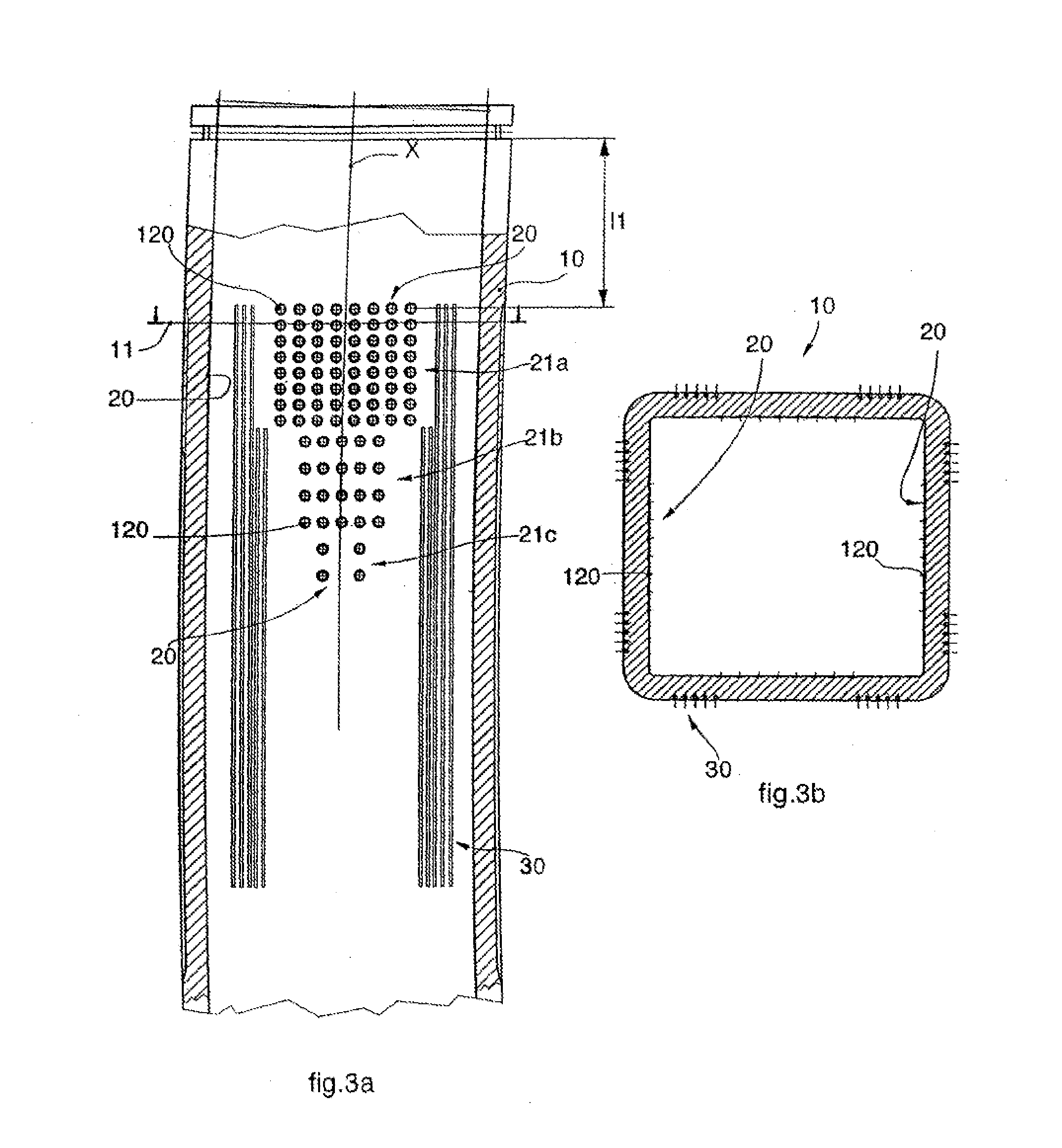Crystallizer for continuous casting
- Summary
- Abstract
- Description
- Claims
- Application Information
AI Technical Summary
Benefits of technology
Problems solved by technology
Method used
Image
Examples
Embodiment Construction
[0037]A crystallizer 10 for the continuous casting of long products is shown schematically in FIG. 1, where the reference number 11 substantially indicates the nominal line of the meniscus of liquid metal.
[0038]In a crystallizer 10 of this type, for long products such as blooms or billets 12, of a polygonal shape, preferably quadrangular, even more preferably rectangular or square, with thin wails and cooled by means of an external jacket, the isotherm lines (at equal temperature) on the internal surface of the crystallizer 10 have, a development of the elliptical or parabolic type, like the lines 13 and 14 shown in FIG. 1.
[0039]In particular, the region indicated by the reference number 15 is that which has the maximum temperatures because it corresponds to the region of the meniscus; on the contrary, the adjacent region indicated by the reference number 16, comprised between the two isotherm lines 13 and 14, has lower temperatures.
[0040]In FIG. 2 the development of the heat flow a...
PUM
| Property | Measurement | Unit |
|---|---|---|
| Fraction | aaaaa | aaaaa |
| Fraction | aaaaa | aaaaa |
| Width | aaaaa | aaaaa |
Abstract
Description
Claims
Application Information
 Login to View More
Login to View More - R&D
- Intellectual Property
- Life Sciences
- Materials
- Tech Scout
- Unparalleled Data Quality
- Higher Quality Content
- 60% Fewer Hallucinations
Browse by: Latest US Patents, China's latest patents, Technical Efficacy Thesaurus, Application Domain, Technology Topic, Popular Technical Reports.
© 2025 PatSnap. All rights reserved.Legal|Privacy policy|Modern Slavery Act Transparency Statement|Sitemap|About US| Contact US: help@patsnap.com



